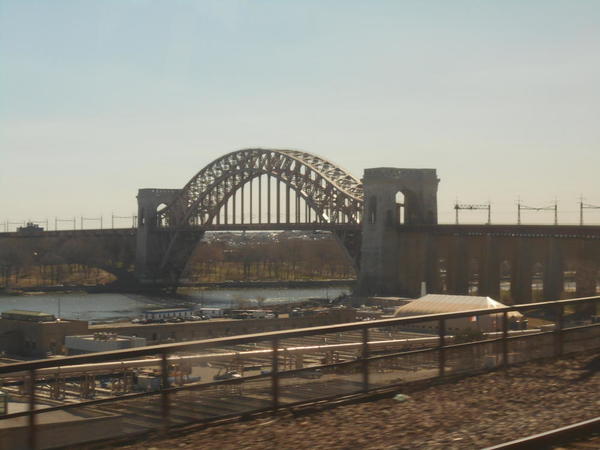Before the completion of the Hudson River tunnels by the Pennsylvania Railroad in 1910, a train traveler between Washington, DC and Boston arrived at Exchange Place in Jersey City, New Jersey and then had to take a ferry across the Hudson River to the West Side of Manhattan Island on 34th Street. Service from New York City to Boston was operated by the New Haven Railroad whose trains ran out of Grand Central (Station) Terminal at 42nd Street and Park Avenue. Thus, after arriving in Manhattan, a traveler had to get from 34th Street (on the West Side) to 42nd Street (on the East Side) in order to board a New Haven Railroad train for Boston. The Hudson River Tunnels were completed in 1910 and Pennsylvania Station, on 32nd Street, opened in 1911, thereby eliminating the ferry trip across the Hudson River, but a surface trip still was necessary to get to Grand Central Station for the trip to Boston. Sunnyside Yard (East of Manhattan) in Queens (on Long Island) was built to serve as a yard facility for PRR Penn Station passenger trains and required construction of tunnels under the East River (also completed in 1910) between Manhattan and Queens. The yard was located in Queens in part because it was impractical to obtain land for such a large yard in Manhattan. The New York Connecting Railroad, a joint venture of the PRR and New Haven Railroads, was incorporated in 1892 and completed in 1917 between Sunnyside Yard and Oak Point in the Bronx, New York (on the New Haven Railroad) via the Hell Gate Bridge, thus serving as a bridge line between the PRR and NYNH&HRR and creating a direct trip for passengers traversing New York City on their way to New England and Boston. The NY Connecting Railroad and Hell Gate Bridge also provided a more efficient route for freight traffic from New Jersey (through Bay Ridge, in Brooklyn, NY via car-floats) to New England. The Hudson River Tunnels, the East River Tunnels, and Hell Gate Bridge today are part of Amtrak’s Northeast Corridor and are a vital transportation link on which a significant part of the Nation’s economy is dependent. The tunnels are aging, deteriorating, and new ones need to be built. It was reported today that New York and New Jersey have agreed on funding (with the Federal Government) that would allow construction to begin in 2018.
MELGAR






